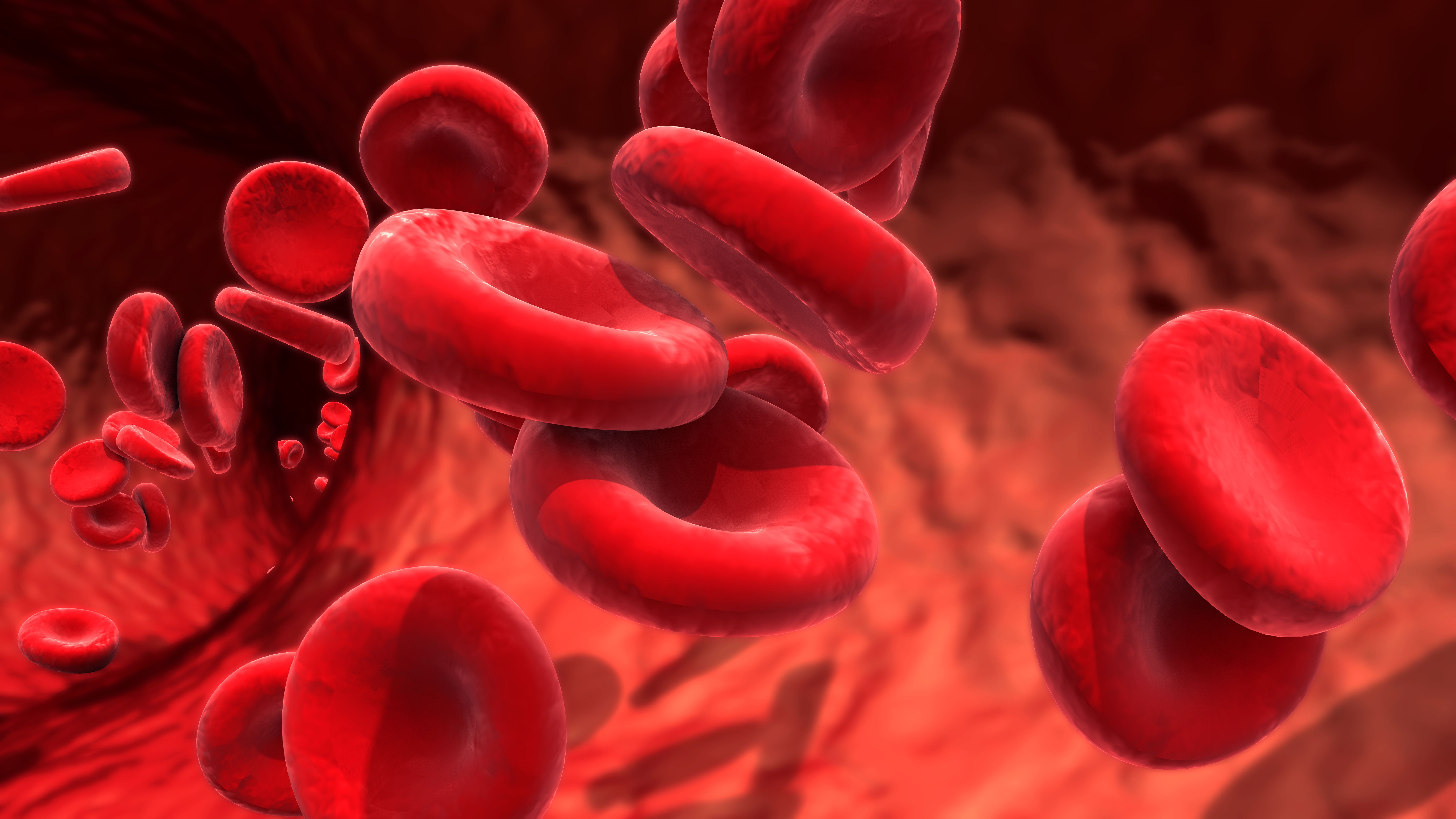- Center on Health Equity & Access
- Clinical
- Health Care Cost
- Health Care Delivery
- Insurance
- Policy
- Technology
- Value-Based Care
High LDH Levels Associated With Worse Survival in Newly Diagnosed AML
Elevated white blood cell counts also appear to correlate with shorter overall survival in patients receiving standard induction chemotherapy plus cytarabine for acute myeloid leukemia.
This article was originally published by CancerNetwork.
High serum lactate dehydrogenase (LDH) levels appeared to be a poor prognostic factor for survival outcomes in a small cohort of patients with newly diagnosed acute myeloid leukemia (AML), according to findings from a retrospective single-center study.1
Patients with an LDH level above the median value experienced a median overall survival (OS) of 2 months (range, 1-6) compared with 6 months (range, 1-9) in those with lower LDH levels (P = .035).
Red Blood Cells | Image credit: Design Cells - stock.adobe.com

Investigators reported that elevated LDH levels significantly correlated with worse survival among patients based on univariate (HR, 1.012; 95% CI, 1.005-1.071; P = .018) and multivariate analysis (HR, 1.007; 95% CI, 1.001-1.011; P = .036). Additionally, an elevated white blood cell count (WBC) was also a poor prognostic factor for survival based on univariate analysis (HR, 1.006; 95% CI, 1.002-1.011; P = .041). Findings from the multivariate analysis indicated that there was less statistically significant correlation between WBC counts and OS (HR, 1.003; 95% CI, 0.997-1.010; P = .318).
“LDH is a non-specific tissue turnover marker, a normal metabolic process. Various neoplasms can lead to elevations in LDH levels or one of its isozymes,” the study authors wrote in a previous publication of the study.2 “LDH is a potent biochemical marker associated with lower response rates and poor survival in [patients with] AML. Further studies are required to incorporate LDH in the risk stratification of the disease.”
In this retrospective study, investigators assessed outcomes in 40 patients with AML at the Hematology unit of Oncology Center Mansoura University in Egypt. The primary objective was exploring the clinical significance and prognostic value of serum LDH levels in patients with AML. All patients received standard intensity induction chemotherapy plus high-dose cytarabine for those in complete remission.
The study population consisted of 19 male and 21 female patients. The mean patient age was 44.3±15.1 years. Additionally, patients had a median WBC count of 31.5x109 cells/L, a median hemoglobin concentration of 8.5 g/dL, and a median platelet count of 32.2x109 platelets/L.
Investigators reported a median serum LDH level of 731.5 IU/L (range, 188-6292) in patients with AML, which was significantly higher than that of healthy controls (214 IU/L; range, 107-330; P <.001). There was a significant positive association between LDH levels and WBC count.
Elevated serum LDH levels significantly correlated with advanced age (P = .008) and WBC counts higher than 50x109 cells/L (P = .003). Investigators identified no significant association between LDH levels and stratified disease risk groups (P = .451), whether patients responded to treatment (P = .825), or mortality (P = .555).
In a Cox regression analysis for predictors of OS in patients with AML, age did not significantly correlate with survival based on univariate analysis (HR, 1.001; 95% CI, 0.976-1.027; P = .920). Additionally, univariate analysis highlighted that absolute neutrophil count was not significantly associated with OS (HR, 0.999; 95% CI, 0.981-1.018; P = .928); the same was true for abnormal cytogenetics (HR, 0.888; 95% CI, 0.378-2.082; P = .784).
Investigators presented these findings as part of a poster presentation at the 2023 Society of Hematologic Oncology (SOHO) Annual Meeting.1
References
1. Shaaban Y, Taalab MM. The effect of elevated serum lactate dehydrogenase level on survival of newly diagnosed acute myeloid leukemia patients. Presented at: 2023 Society of Hematologic Oncology (SOHO) Annual Meeting; September 6-9, 2023; Houston, TX. Abstract AML-002.
2. Taalab MM, Shaaban Y. Prognostic impact of pretreatment serum lactate dehydrogenase levels in adult patients with acute myeloid leukemia: single center experience. Benha Med J. Published online May 29, 2023. doi:10.21608/BMFJ.2023.195235.1771
